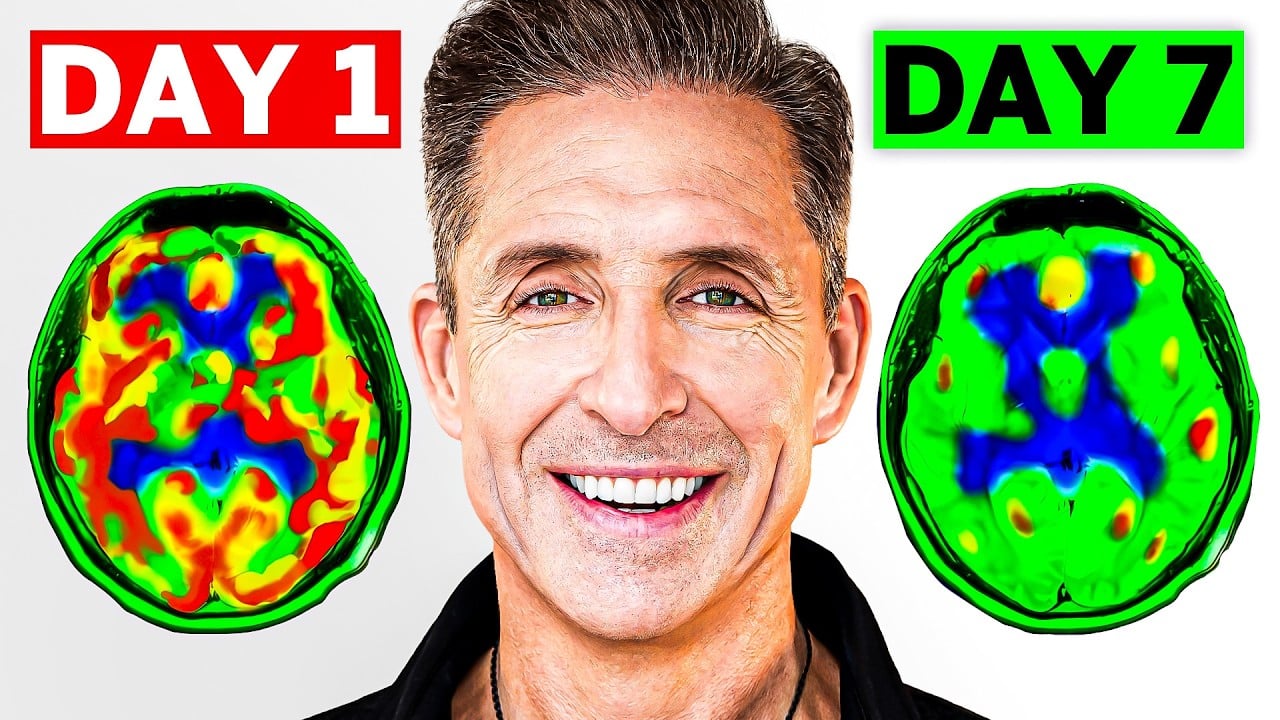
Have you ever known what someone will say before they say it or been able to predict future events?
Yogic texts suggest that through an advanced state of meditation known as Samadhi you can consistently experience these seemingly telepathic and clairvoyant occurrences. What’s more, science backs up these claims.
In a podcast episode (iTunes), bodybuilder Frank Zane, aka Mr. Olympia, attributed his 1977-1979 Olympic gold medals to his meditation practice and the state of Samadhi. “[Through Samadhi] I was able to convince myself that I was the winner. I think that’s the secret of winning — is to win it ahead of time.” By putting himself in an altered state, Zane secured the medals before the competitions via this intense form of visualization and positive thinking.
Read on to learn how you can tap into Samadhi to upgrade your human performance.
What is Samadhi?
Yogic view of Samadhi
Samadhi is an intense state of concentration or awareness that’s achieved through disciplined meditation. In this heightened state, you become one with the object or thought you’re meditating on. In other words, you’re so completely absorbed in your task that you completely lose track of yourself.
The “Yoga Sutras of Patañjali,” a collection of guiding truths on the practice of yoga, explains how to sit in meditation by paying keen attention to your mind as a means to gain supernormal powers. These powers include telepathy (knowing what someone will say before he/she says it); clairvoyance (predicting the future); and psychokinesis (the ability to move objects without touching them).
Before you dismiss this Eastern philosophy as complete woowoo, here’s what science has to say about the practice.
Scientific view of Samadhi
In science speak, think of Samadhi as an altered state of high performance in which you achieve mind mastery. In “Supernormal: Science, Yoga, and the Evidence for Extraordinary Psychic Abilities,” Dean Radin, Director of Research at the Institute of Noetic Sciences (IONS), offers his take on Samadhi in more contemporary terms.
“Many ancient teachings [ie, “Yoga Sutras”] tell us that we have the capacity to gain extraordinary powers through grit or grace. Techniques used to achieve these supernormal abilities, known as siddhis in the yoga tradition (from the Sanskrit, meaning “perfection”), include meditation, ecstatic dancing, drumming, praying, chanting, sexual practices, fasting, or ingesting psychedelic plants and mushrooms. In modern times, techniques also include participation in extreme sports, floating in isolation tanks, use of transcranial magnetic or electrical stimulation, listening to binaural-beat audio tones, and neurofeedback.”
Ready to dive into the neuroscience of such techniques, specifically Samadhi? This comprehensive report reveals how meditation, leading to Samadhi, creates focused stability, which in turn helps to uncouple cyclical negative thinking patterns in the brain, and ultimately lead to increased joy. In this report, researchers replicated a number of previous studies to get at the root benefits of Samadhi for enhanced concentration and cognitive function. Findings revealed:
- Improved cognitive performance after six weeks of meditation, including processing speed and quality of performance. (These factors were measured through a number of modern-day cognitive tests like Stoop task and d-2 concentration tests.)
- 20 minutes of meditation for two weeks improved Graduate Record Examination (GRE) reading comprehension scores.
- Those who participated in a three-month long retreat for 5 hours of daily meditation had improved vigilance and ability to sustain attention.
How do you attain Samadhi?
When it comes to any meditation practice, including one geared toward the ultimate state of Samadhi, posture is key. Aim for your head, neck, and trunk in absolute alignment. Your shoulders should be relaxed and your breath, as easy and calm as possible. This allows energy (or prana) to move through you freely.
Next, your goal is to focus on your breath. This helps you concentrate with the least amount of distraction, so you can focus for a longer period of time.
Prolonged concentration becomes meditation, which, with time and practice, gives way to spiritual absorption, or Samadhi. Here are the key elements of each phase to consider in a Samadhi-focused meditation practice:
Concentration (Dharana)
- Focus your attention on your naval, heart, or between your eyebrows.
- Select an object to envision in the center of that bodily space. For instance, you can envision a mantra, an image of a spiritual guru, or a cross at the center of your forehead or heart. This helps your mind to fix itself to the space you are creating in the meditation.
- You may notice distractions arise – sounds in the room, thoughts, etc. Acknowledge them without judgment. Then gently bring your mind back to your meditative space.
- You’ll know you have reached a state of concentration when the object of your focus remains in your mind for longer than the objects that distract you.
Meditation (Dhyana)
- Fixed concentration evolves into meditation when the experience of your mind in focus is uninterrupted by much distraction.
- Meditation is simply a continuation of concentration into a more evolved state.
- Many yogis believe that if your mind remains concentrated on a particular object for more than 12 breaths, you are meditating.
Spiritual absorption (Samadhi)
- As your mind becomes entirely absorbed with the object occupying the space in which you envisioned or confined it, you are entering Samadhi.
- In this final phase, the actual process of concentration (which gave way to meditation), the object you are concentrating on, and you (your mind doing the concentrating) are unified.
Your fast-track to Samadhi
Bulletproof founder Dave Asprey runs a neuroscience institute called 40 Years of Zen that’s focused on a fast-track to deep meditative states like Samadhi. By first studying the brain wave patterns of Zen monks who meditate, the institute then uses a neurofeedback machine to simulate such experiences. (Neurofeedback teaches your brain to respond differently through positive and negative reinforcement.)
Instead of spending years in a cave meditating, the neurofeedback mechanisms prod you along. A computer, connected to your brain via electrodes, tells you when you are distracted and off-track and gently guides you back to your meditative state. Dave notes that “while it’s exhausting, you can experience states like Samadhi more quickly.”
How do you know when you’ve reached Samadhi?
According to Zane: “[Samadhi] is peace — past the place of understanding. There’s no explaining it. You just have it. It just descends upon you. [You’re] just tremendously joyful and peaceful. And then, [when I said to myself] ‘I’m tremendously joyful and peaceful now’ — then it went away.”
While Samadhi may only last for 30 seconds to 2 minutes — and can take years to cultivate the natural way — it’s as profound as it is fleeting. As Zane’s life testifies, it can open the door to altered states of consciousness and excellence in human performance.











